TENDED
TENDED
- WORK
- FULL CATALOGUE
- WORK
- FULL CATALOGUE
- WORK
- FULL CATALOGUE
Buckman’s latest body of work, BLOODWORK, focuses on portraits of survivors, whether those of domestic abuse, illness, or other hardships, and their radical embracement of joy in the face of such adversity. Primarily drawn from people from Buckman’s own close circle, the subjects depicted are seen to be thriving in the wake of a prior, or persisting, pain. In the work lately I see your ribbons & your bows,a cancer survivor is seen in a moment of ecstatic exaltation; with scars visible from surgeries, her arms are thrown up behind her head and her expression exudes positivity. Inspired by rave culture and the freedom and transformative qualities of music, BLOODWORK renders many of its figures in a state of dynamism, dancing across the fabric.
September 5 – October 14
Lyles & King is pleased to present TENDED, a solo exhibition by Zoë Buckman. This is the artist’s first solo exhibition with the gallery.
Zoë Buckman effortlessly merges multiple mediums—embroidery, textiles, appliqué, sculpted forms, painting, and drawing—into an urgent body of composite work that strikes far beyond the sum of its parts. Her fabric flatworks are a dense textured weave—portraits and scenes of personal history, collective trauma and experience—that spool an ongoing narrative through their pictorial and textual juxtapositions. Incorporating vintage fabrics as a canvas, fabrics that are more often associated with ‘women’s work’— table coverings, dish cloths, and tea towels—Buckman’s work is imprinted with a powerful female presence throughout.
Buckman has addressed themes that are hard pressing and vital: female outrage, gendered violence, reproductive rights, terminal illness and grief. But, as the title portends, there is a softness at heart in this new collection of work. While still confronting issues with characteristic boldness, Buckman focuses instead on celebrating the people in her life—a community that is largely female and genderqueer—who offer a resilient kindness and support for each other in spite of personal and societal confrontation. “It’s a privilege of the female experience,” she explains. “A propensity towards our community and having each other’s back.”
At the center of many of the works on display is a figurative element—a character (or characters) often drawn in broad inky strokes, or pinned down in the wavering threads of sewn lines. Buckman’s original reference images for these characters are sublimated from personal photographs which the artist nostalgically perused during the isolated moments of the Covid-19 lockdown. At the edges of the frame are textual and typographic dialogues, pulled and edited from her own diaristic process of recording spooling notes about her friendships and dialogues on her smartphone.
A pressing example is drink tea clean, where Buckman displays her narrative and material prowess. In the foreground is an embroidered reproduction of a photograph taken of the artist’s mother, washing her hair just before her first cancer treatment. Framing this intimate scene are a series of texts Buckman received from her mother nine years after this initial photograph was taken. Terminally ill at that moment, her mother’s personality is clear through her text’s idiom, capitalization, and syntax. Buckman memorializes and cements her mother’s strength and resilience, sewing it onto the fabric’s surface, thus contrasting with our present where photography and textual communication can be reduced to deletable and binary 0s and 1s. Here, are artifacts imbued with a deeply human urge to pin down—in this case literally with thread and needle—memories and moments that matter.
There exists a clear tension between Buckman’s intention to highlight these moments of care, alongside texts that are lined with justified radical rage. This harnessing of opposing forces is present throughout. Not only thematic, it can be seen in the contrast between her chosen soft materials and hard messages, and between the structure of typographic forms and the gestural abstraction of her wavering figures. These considered divergences are skillful, displaying the mature workings of an artist with much to tell us about herself, her community, and the world around her. At a moment where many political machinations seek to mitigate uniquely feminine powers, Buckman stands forth. Clearly, a woman’s work is never done.


















































